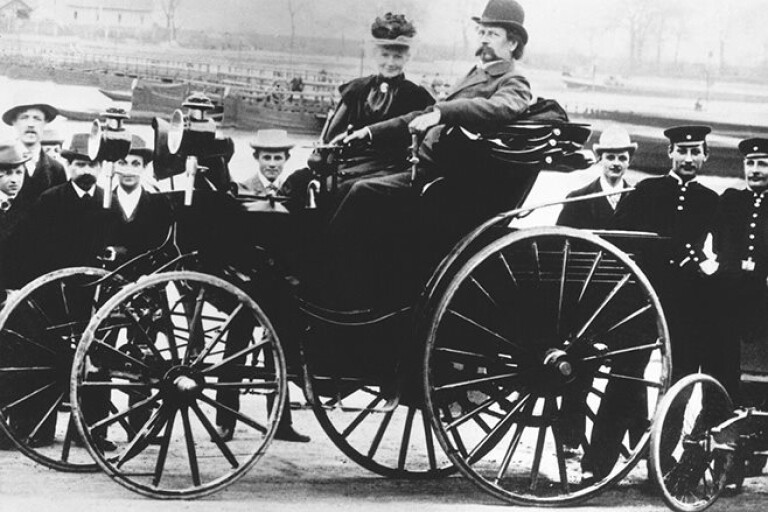
THE first woman to ever drive a car has been inducted to the Automotive Hall of Fame more than a century after she snuck behind the controls of her husband’s fledgling three-wheeler and went to visit her mother.
The Detroit-based institution honouring all things cars announced late last week that Bertha Benz, the wife of the man who invented the automobile would join her husband Carl among the industry’s recognised luminaries. The wait to recognise Bertha’s role in her husband’s success has been a long one; Carl was added to the register in 1984.
Bertha (pictured above next to Carl Benz) famously invested her inheritance in her husband’s company, allowing him to build in 1886 what is now recognised as the world’s first car – the three-wheeled Patent Motor-wagen Typ I.
However, Carl struggled to convince compatriots that the motor-wagon was the way of the future. Bertha, as it turned out, had the solution.
In August 1888, Bertha borrowed her husband’s car to make a 100-kilometre round trip to her mother’s house, taking a full day to get there. Along the way she had to solve a number of problems, including clearing a blocked fuel line with a hatpin, used a garter to insulate an ignition wire, asking a cobbler to nail leather patches on the wooden blocks used as brakes to make them work better, and asking a blacksmith to mend a broken drive chain.

According to Mercedes-Benz, the mother of four hid her husband from plans to use the school holidays as an opportunity to drive through the German countryside with her sons Eugen and Richard in tow.
“They pushed the three-wheeled motor car for the first few metres as they didn’t want to start the .75 hp (0.55 kW) single-cylinder four-stroke engine until they were out of earshot of the house in order not to wake the inventor from his slumber,” the company says.
“When Carl Benz later entered the kitchen, he would find a message telling him about the journey they had set out on to Pforzheim.”
Along the way, she also had to top up the engine’s cooling system with water, and refuel the engine’s 4.5-litre tank with a cleaning solvent – ligroin – which was only available at chemist shops. The Patent Motor-wagen’s two gears were also too tall for climbing hills, and the car often needed to be pushed up them.
Bertha kept her husband informed of their progress by telegram.
Returning several days later, Bertha used the experience to help her husband improve the motor-wagen. This included adding another gear to help the car climb hills.
Her improvements to Carl Benz’s design would eventually help him to sell 25 of the cars, which included some versions converted to four wheels as an experiment.
A Patent Motor-wagen believed to be the one driven by Berta Benz today belongs to London’s Science Museum. It is on show in Germany.
SPECS
Model: Patent Motor-wagen Typ III
Engine: 1660cc single-cylinder four-stroke, 2v
Power: 1.8kW at 500rpm
Transmission: Two-speed fixed pulley, two forward gears
Front suspension: Front wheel in control fork with no springs
Rear suspension: Rigid axle, full-elliptic springs
Steering: Rack-and-pinion steering
Brakes: Hand-operated wooden blocks, rear wheels only
Wheelbase: 1575mm
Track: 1250mm
Wheels: 800mm (front), 1125mm (rear)
Weight: 360kg
Top speed: 16 km/h
Fuel use: 10L/100km (est, ligroin fuel)
Want more? Check out nine famous female racing drivers.
COMMENTS